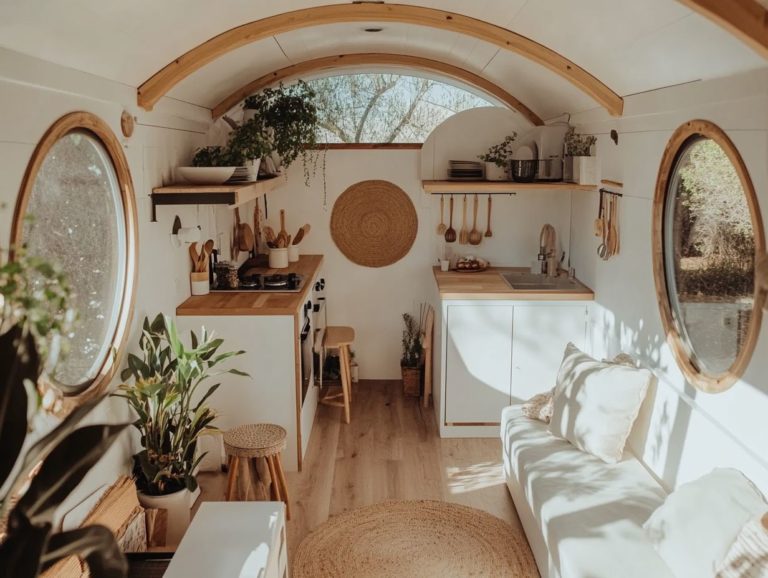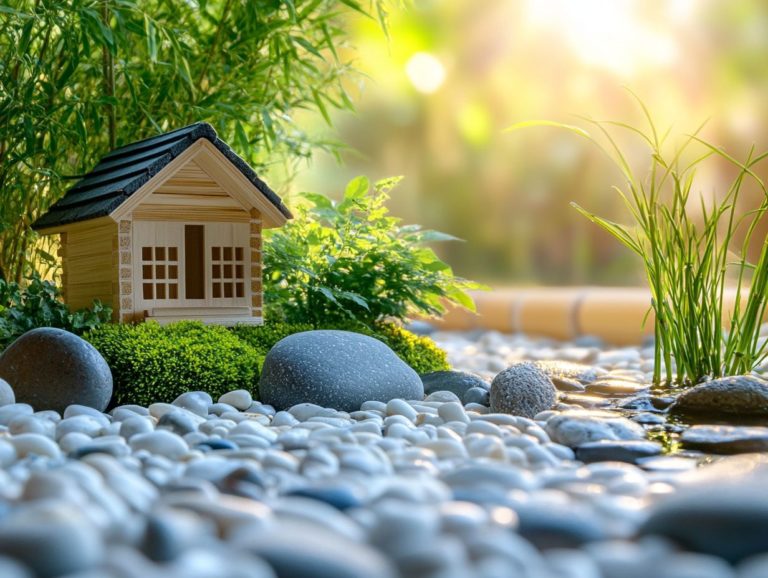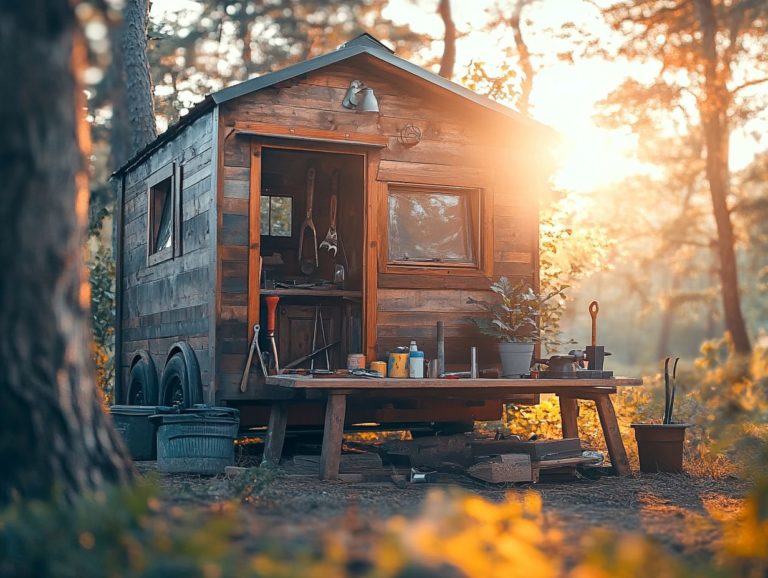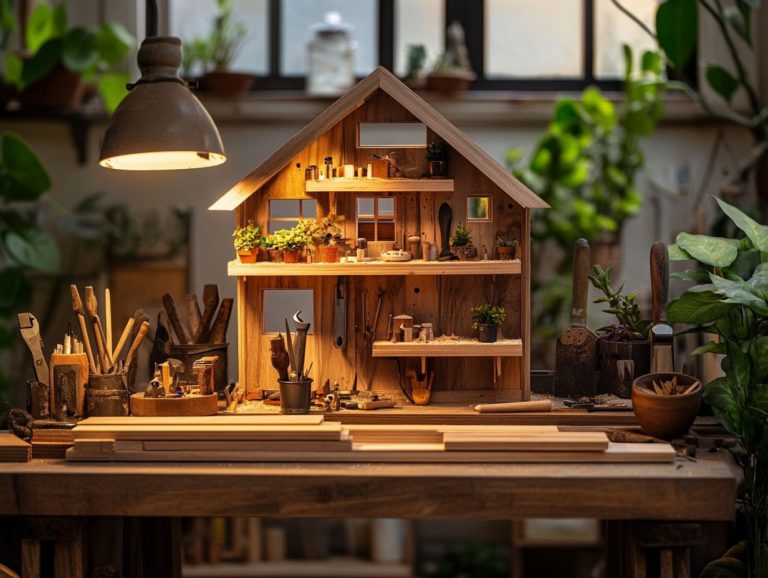How to Build a Tiny House Fire Pit
Fire pits are an exceptional enhancement for any outdoor space, especially in a tiny house setting. They effortlessly create a cozy atmosphere for gatherings, enveloping you and your guests in warmth and togetherness while providing a practical source of heat and cooking possibilities.
Get ready to dive in and discover how to build your own fire pit! You ll learn how to select the ideal location and materials, along with straightforward construction and maintenance tips.
You will also find alternative options for maximizing your space, including ideas for creating a secret fire pit area.
Prepare to transform your outdoor area into a welcoming retreat!
Contents [hide]
- Key Takeaways:
- Choosing the Right Location
- Materials and Tools Needed
- Building the Fire Pit
- Maintaining and Using the Fire Pit
- Alternative Fire Pit Options for Tiny Houses
- Frequently Asked Questions
- 1. What materials do I need to build a tiny house fire pit?
- 2. Do I need any special tools to build a fire pit for my tiny house?
- 3. How do I choose the location for my tiny house fire pit?
- 4. Can I use a regular fire pit for my tiny house?
- 5. What safety precautions should I take when building a fire pit for my tiny house?
- 6. Is it necessary to have a fire pit for my tiny house?
Key Takeaways:
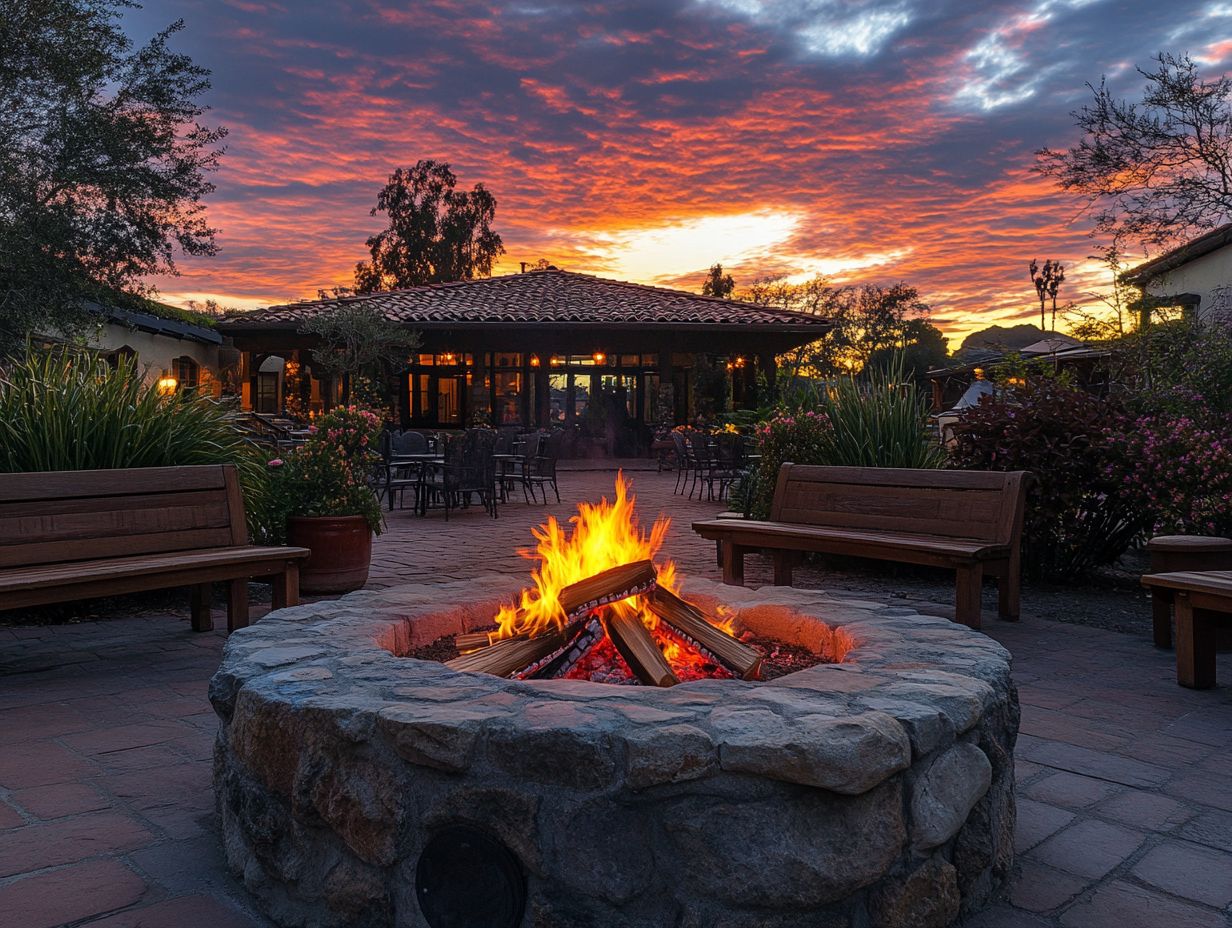
- Choose a safe and nice-looking location for your tiny house fire pit. Consider factors such as wind direction, nearby materials, and overall design, ensuring it complements your acre land.
- Gather the necessary materials and tools before building your fire pit, including fire-resistant bricks, a shovel, and a level. Follow step-by-step instructions for a successful and safe construction process.
- Maintain your fire pit by regularly cleaning out ash and debris and following safety precautions. Alternatively, consider other compact fire pit options such as a tabletop fire pit or a portable fire bowl.
Why Have a Fire Pit in a Tiny House?
Having a fire pit in your tiny house can significantly elevate your outdoor experience. It crafts a cozy atmosphere for family gatherings, especially on those cool evenings.
This addition not only radiates warmth but also serves as a central hub for friends and family, where stories and memories come to life over campfires or enjoying a classic family weenie roast.
The right fire pit can transform your backyard into a welcome oasis, perfect for relaxation or hosting intimate events.
Picture the warmth of flickering flames casting a soft glow on the faces gathered around, inspiring laughter and fostering connections that often get lost in today s fast-paced world.
Beyond the emotional ties it nurtures, safety is a top priority for tiny homeowners. Choosing a fire pit designed with safety features allows you to ease any concerns, enabling everyone to fully enjoy the experience.
A beautifully crafted fire pit complements the aesthetics of your tiny home and serves as a stunning focal point, enhancing the overall charm and outdoor ambiance. This seamless blend of practicality and beauty makes it an ideal addition to any tiny dwelling.
Choosing the Right Location
Selecting the perfect spot for your fire pit is essential for both safety and visual appeal, particularly in the charming backyard of your tiny house, framed by magnificent oaks, maples, and redbuds.
The right location will not only guarantee a safe distance from any flammable materials but will also elevate the ambiance of your outdoor haven, inviting delightful evenings spent by the fire at your DIY backyard fire pit.
A thoughtfully positioned fire pit serves as a captivating focal point, effortlessly drawing family and friends together while infusing your outdoor space with undeniable charm, especially if you arrange Adirondack chairs around it.
Considerations for Safety and Aesthetics
When planning your fire pit, it s essential to strike a balance between safety and looks. Ensuring that the fire pit perimeter is well-defined can prevent accidents, just as Smokey the Bear would advise.
The right fire pit can transform your tiny house backyard into a welcoming space for gatherings while keeping a respectful distance from anything flammable. This thoughtful planning not only protects against the risk of exploding campfire rocks but also cultivates an inviting atmosphere for evening relaxation.
To achieve this, consider establishing a safe perimeter using gravel or stone to create a clear boundary between the fire pit and nearby foliage or structures. Choosing fire-resistant materials like steel or brick will enhance safety while ensuring they blend seamlessly into your landscape.
Adding landscaped elements such as decorative stones, hardy plants, or soft lighting can truly elevate the charm of the area. And don t forget comfortable seating cushioned benches or portable chairs arranged in a cozy circle around the fire will invite leisurely conversations and create memorable moments with friends and family.
Start planning your fire pit today for unforgettable evenings under the stars!
Materials and Tools Needed
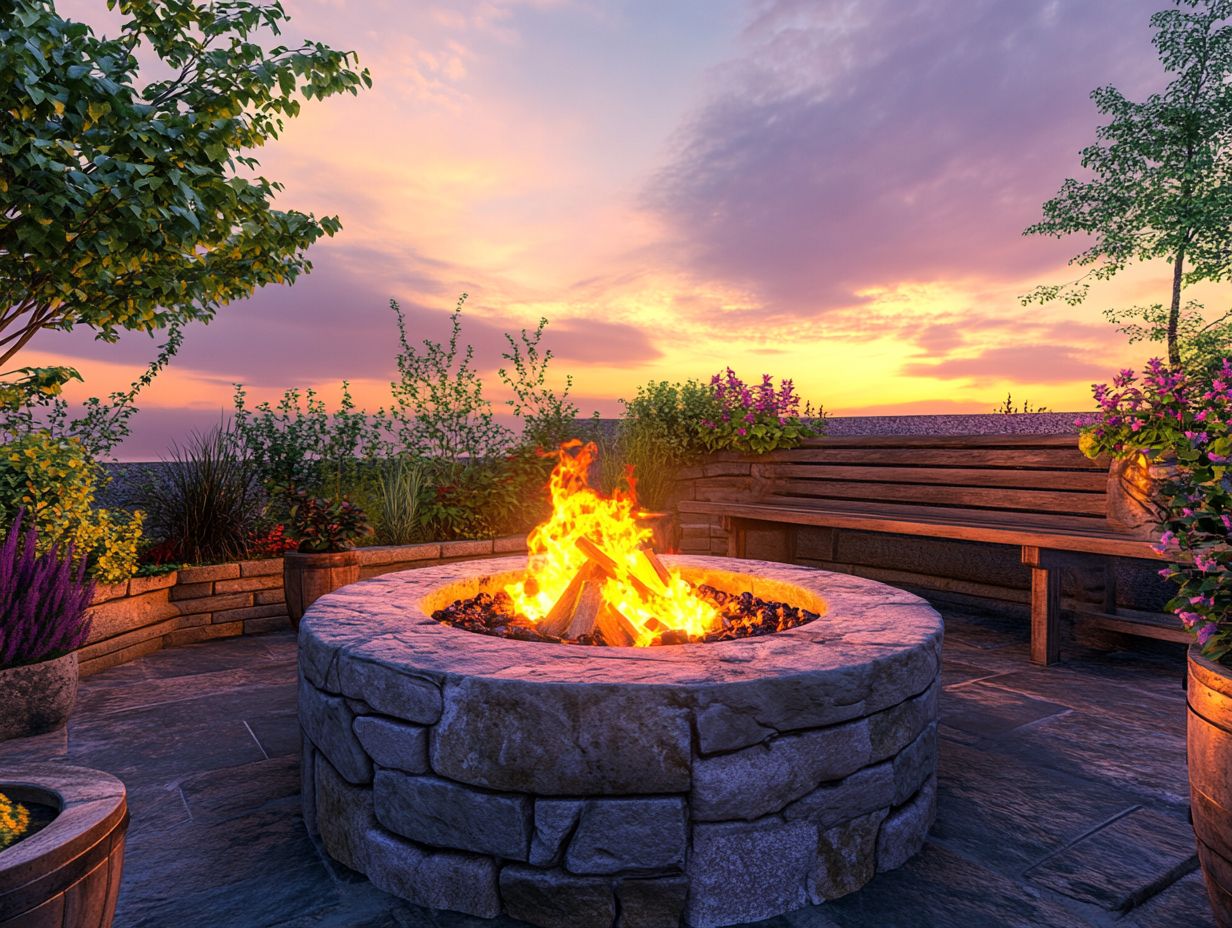
Creating a DIY fire pit demands a thoughtful selection of materials and tools to ensure both functionality and lasting durability. If you’re aiming for a rustic aesthetic with flagstone or sandstone, prioritize quality in your choices.
Key materials to consider include:
- Fire pit kit from Home Depot can be an excellent start for your project.
- Construction adhesive
- Necessary tools for excavation and assembly, including a shovel, will ensure a sturdy build.
Careful planning ensures a safe and enjoyable fire pit experience in your backyard. With proper preparation, your DIY endeavor will not only be rewarding but also enhance the visual appeal of your outdoor living space.
Recommended Supplies and Equipment
To successfully build your own fire pit, having the right supplies and equipment is essential. Stores like Home Depot offer a wealth of options tailored just for someone who enjoys DIY projects.
A basic fire pit kit typically includes rugged materials designed to endure high temperatures. Additional supplies like gravel and pine bark nuggets will help secure your fire pit safely in place. By selecting the right equipment, you can create a fire pit that is both functional and visually appealing.
Essential tools such as a shovel, level, and safety goggles are key to ensuring your fire pit is expertly constructed and meets all necessary codes. A metal fire ring adds extra durability, protecting surrounding areas from excessive heat.
Don’t underestimate the importance of fire pit covers; they are covers that protect your fire pit from rain and debris when not in use. These items can be easily found online or at your local hardware stores, making the DIY process simple and enjoyable.
By investing in quality tools and materials, you’ll ensure that your fire pit looks fantastic and provides safe, memorable gatherings for years to come.
Building the Fire Pit
Creating a fire pit can be an immensely rewarding DIY project. It demands thoughtful planning and a methodical approach to ensure both safety and enjoyment in your backyard, where you can gather with friends.
Begin by selecting a clear area for your campfire. Outline the dimensions and design of your fire pit. As you consider the materials, keep in mind the overall aesthetic you wish to achieve.
This endeavor is not merely practical; it can also serve as a stunning centerpiece for gatherings and a cozy retreat for relaxation, drawing everyone to enjoy the warmth of a wood burning fireplace.
Step-by-Step Instructions
Following step-by-step instructions is crucial when constructing your DIY fire pit. This ensures that every material and tool is utilized effectively, creating a safe and enjoyable space.
Begin by gathering your chosen materials gravel, stone, or a fire pit kit and make sure you have all the necessary tools ready for excavation and assembly. This organized approach makes building your fire pit easy and fun!
Once everything is in place, it s essential to prepare your site. Mark the designated area and dig a space that complies with rules in your area about safe fire pit construction. During excavation, don your safety gear to shield yourself from any debris or sharp objects.
As you layer the materials, adhere closely to the manufacturer s guidelines. Documenting each step can prove invaluable for troubleshooting later on, especially if you encounter uneven surfaces or drainage issues.
Regularly check for stability and alignment throughout the assembly; these small observations can save you from larger headaches down the road.
Maintaining and Using the Fire Pit
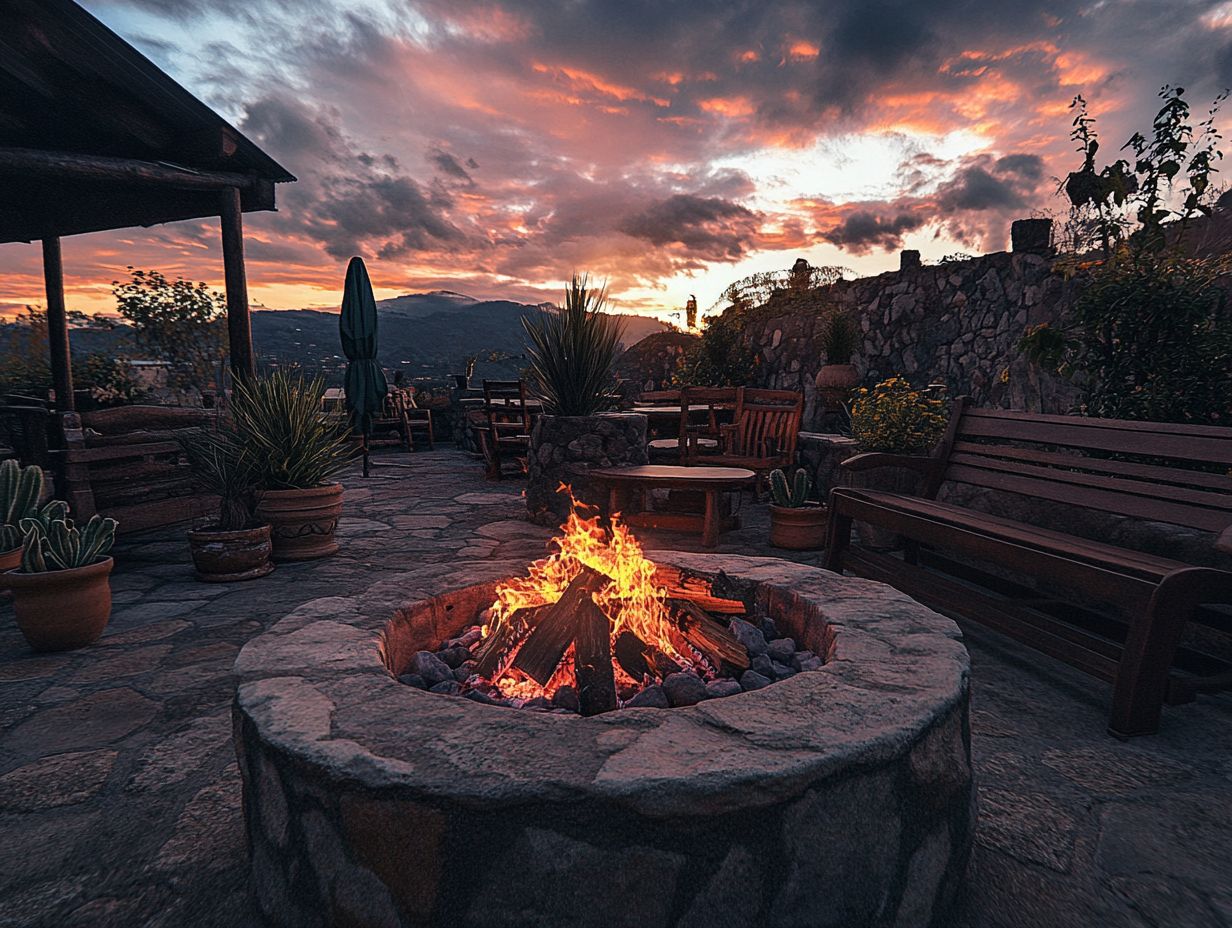
Maintaining and using your fire pit responsibly is essential for ensuring its longevity and safety during family gatherings in your outdoor space. By committing to regular cleaning and upkeep, you enhance the attractiveness of your fire pit and mitigate potential hazards that can arise from improper use.
By following safety tips while enjoying your fire pit, you can create memorable evenings around the fire with peace of mind, free from worries about accidents or dangers.
Cleaning and Safety Tips
Implementing effective cleaning and safety tips is essential for maintaining your fire pit, especially if it s a DIY masterpiece you ve crafted with care. Regularly clearing out ashes and debris doesn t just keep the area looking sharp; it also minimizes fire hazards that come from neglect.
By adhering to the best practices for fire pit safety, you can savor the moments spent with family and friends around the comforting glow of the flames, knowing you ve taken the right precautions.
Using these tips will extend the life of your fire pit and make it a standout feature of your outdoor gatherings. After each use, allow the fire pit to cool completely before you dive into cleaning. Use a metal scoop or shovel to remove the cold ashes, and a metal brush to scrub the inner surfaces, eliminating any buildup that could turn into a safety concern.
Always inspect the surrounding area for flammable materials to ensure safety before you light the fire! Keep a bucket of water or sand close by for emergencies. These small, consistent actions can greatly enhance both safety and the inviting atmosphere of your outdoor space.
Alternative Fire Pit Options for Tiny Houses
For anyone residing in tiny houses, exploring alternative fire pit options allows for flexibility without sacrificing warmth and ambiance. Consider choices like gas fireplaces or wood-burning setups, which can be seamlessly integrated into small spaces or even unconventional locations like a tree house.
These options create a cozy atmosphere while bypassing the complications often associated with traditional fire pits. Additionally, consider adding a tiny house water feature to discover the perfect fire pit that fits your tiny home lifestyle and makes every gathering unforgettable!
Other Options for Limited Space
When faced with limited space, exploring alternative fire pit options opens the door to innovative solutions that fit perfectly within your outdoor area. Portable fire pits or those featuring compact designs can be fantastic additions, offering flexibility for gatherings without overwhelming your space.
These choices allow you to revel in the warmth and ambiance of a fire while keeping your area organized and inviting.
Opting for tabletop fire bowls or mini fire pits is another excellent route; they not only enhance the cozy atmosphere but also require minimal setup and storage. As you select your fire pit, consider important features like safety screens and adjustable flames, which elevate usability while ensuring the safety of everyone involved.
It’s crucial to position these fire pits away from flammable materials, especially in smaller yards. Choosing materials that can withstand heat and are easy to clean will further streamline maintenance, making these compact fire solutions both practical and a joy for your outdoor gatherings.
Frequently Asked Questions
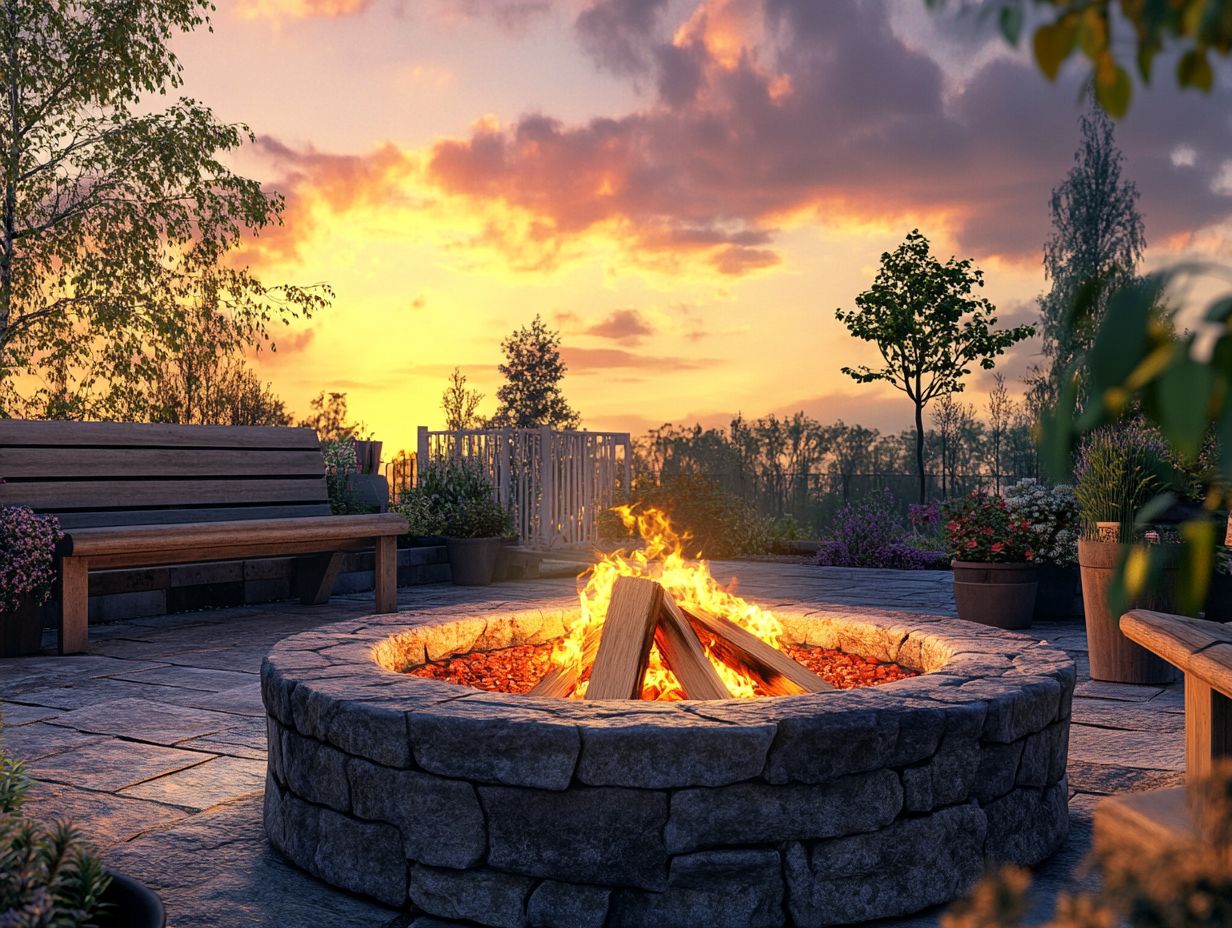
1. What materials do I need to build a tiny house fire pit?
To build a tiny house fire pit, you will need bricks, pavers, gravel, a shovel, a level, and fireproof materials such as heat-resistant mortar, which can withstand high temperatures without cracking, or fire bricks.
2. Do I need any special tools to build a fire pit for my tiny house?
No, you do not need any special tools. Basic gardening tools such as a shovel and level will suffice for building a fire pit for your tiny house.
3. How do I choose the location for my tiny house fire pit?
Choose a location that is at least 10 feet away from any structures, trees, or flammable materials. Ensure the area has good ventilation and is not too close to your tiny house.
4. Can I use a regular fire pit for my tiny house?
Use a fire pit designed for tiny houses. These smaller models are safer for tight spaces.
5. What safety precautions should I take when building a fire pit for my tiny house?
Before building a fire pit, clear the area of any debris or flammable materials. Use materials that can withstand heat and always keep a fire extinguisher close by!
6. Is it necessary to have a fire pit for my tiny house?
A fire pit isn t a must, but it can create a warm, inviting atmosphere outdoors. It s also a great heat source in the colder months. Check with your local fire department for any regulations before you start building one!

